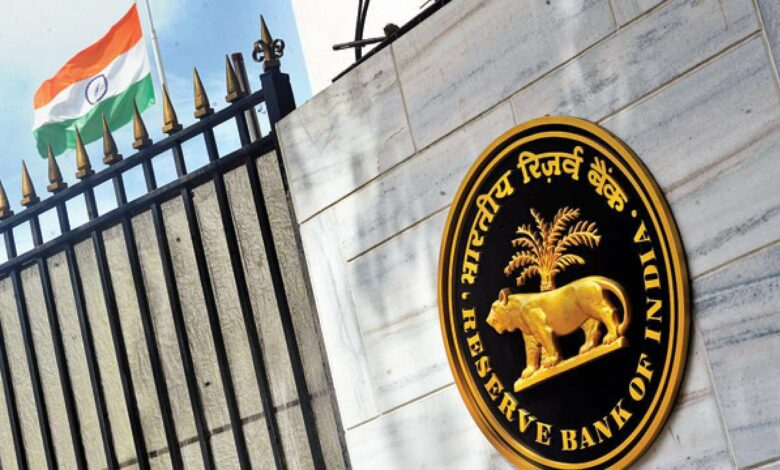RBI In First-ever published ‘Nowcast’ says, India In Historic Technical Recession; Rahul Gandhi claims it is due to the Modis government policies;

All is not good with the Indian Economy as per the latest figures; it is estimated that India’s Gross domestic product (GDP) contracted to 8.6 percent in September ended a quarter of 2020.
This would be the second straight quarter wherein the Indian Economy contracted, as per the team of economists including Micheal Patra, the Central Bank’s Deputy governor in charge of monetary policy.
The Reserve Bank of India, in its first-ever published ‘nowcast,’ which is an estimate based on high–frequency data, the Indian economy had slumped about 24 percent from April to June this year, pushing India into an unprecedented economic recession.
The authors wrote – “India has entered a technical recession in the first half of 2020 – 21, for the first time in its history.”
This is a direct impact seen due to the Covid -19 pandemic that forced companies to shut production. The economic activities stalled until the lockdown was lifted.
However, even with the opening of industries, the companies’ production and sales did not pick up owing to a large scale reduction in mass production.
With weak demand in the market and the unemployment rate increasing in both the urban and rural areas, this has catapulted the Indian economy into a technical recession.
According to the latest reports by the Centre for Monitoring Indian Economy (CMIE), India’s unemployment rate in October stood at 6.98 percent in both the urban and rural areas.
This is an increase from the September 2020 figures, which stood at 6.67 percent.
Even as there is a gradual economic recovery after lifting the lockdown due to the Covid-19 pandemic, India’s problems seem far from over.
Despite ‘new shoots’ in the business revival and robustness in the agricultural sector, the urban and rural sectors’ unemployment rate is a cause for concern.
While the rural sector saw an increase in the unemployment rate, the urban areas’ unemployment rates saw a dip in October 2020.
Data shows the urban unemployment rate at 7.15 percent in October, whereas it stood at 8.45 percent in September.
Curtailing spendings and increasing Savings
Consumers across all sectors have cut back on spending as millions have lost their jobs. Hence savings have seen an increase in the form of bank deposits with preliminary estimates presented in the central bank’s bulletin showing an increase in household financial savings to 21.4 percent of GDP in the Month of April – June, an up in the same period a year ago.
The trend is likely to continue until the pandemic recedes and consumption levels get normalized, as households persist with financial savings.
Estimates put as many as 18.9 million salaried individuals lost their jobs in April to July; this includes the daily wage earners.
In the last few years, India’s economy did not expand; at 5% growth rates, it wasn’t enough to generate jobs for 10 million young people entering the workforce every year.
Falling Incomes, consumption, and investments.
It is reasonable that when the incomes fall or reduce the demand for products and services will also fall, savings and investments will also get impacted; when this happens, the businesses too stop investing. As supply chains get affected, many business units today are not confident about either expanding their businesses or starting new ventures.
However, The reserve bank’s number is lifted by cost cuts at companies that improved operating profits even as sales dropped.
Climbing Inflation
Retail Inflation in India rose as food prices climbed due to lingering supply disruptions.
Reuters’ poll in OCT suggests that India’s already high inflation rate climbed further in September, its highest in five months and faster than Augusts 6.69 percent to 6.88 percent.
The poll also forecasted that the industrial production output fell for the sixth month in a row in August with a 7.5 percent decline.
This is the longest falling streak since the year 2009, as infrastructure output contracted to 8.5 percent, which accounts for about 40 percent of total industrial production.
Tough times ahead?
There still remains a grave risk to Indian and Global growth as reports of the second wave of coronavirus infections have been reported from across the world.
With increasing new infections reported in Delhi and other parts of the country, the pandemic seems to re-emerging and gaining momentum.
The team of economists wrote in the Reserve Banks bulletin – “there is a grave risk of generalization of price pressures, unanchoring of inflation expectations feeding into loss of credibility in policy interventions.”
The economists concluded that “Lurking around the corner is the third major risk – – stress intensifying among households and corporations that have been delayed but not mitigated, and could spill over into the financial sector.”
Politics and blame game
Rahul Gandhi, in his latest attack on the Modi Government in his Twitter handle, has stated that India has entered into recession due to PM Modi’s policies.
On Thursday, he presented his views and targeted the government over the state of India’s economy.
He cited news reports on the country’s GDP growth contraction given by the Reserve Bank Of India’s numbers.
He also mentioned that this was the first time in the history that the country has entered a recession.
The Modi government needs a fresh set of policies to combat the weak economic conditions, the rising inflation rate, and the increase in the unemployment rate.




